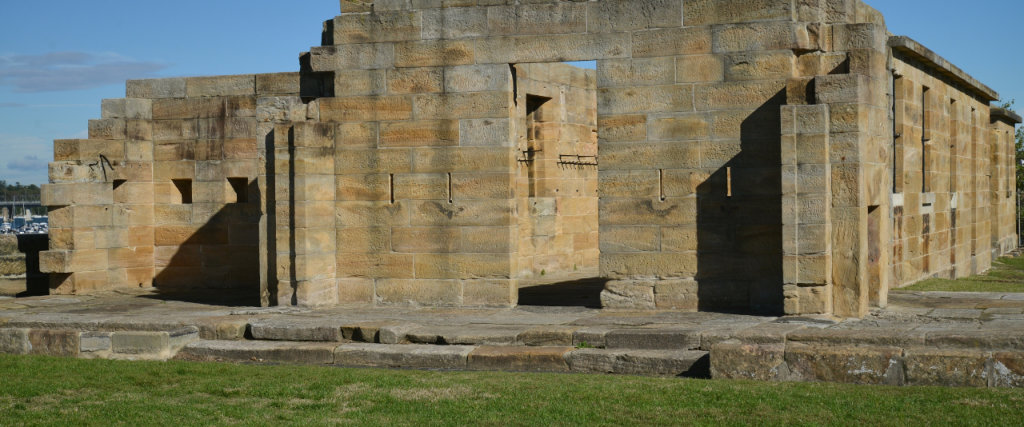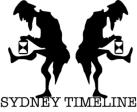

Captain Thunderbolt


This information is from the Biography: Bushranger Frederick Wordsworth Ward
alias Captain Thunderbolt by courtesy of the author Carol Baxter
http://thunderboltbushranger.com.au
Frederick Wordsworth Ward was born in 1835 the youngest of a large
family of children born to emancipated convict Michael Ward and his
wife Sophia. Fred spent his first decade at Windsor, where his parents
probably paid for him to attend St Matthew's Church of England school.
Fred had evidently spent time learning bush skills from his elder brothers
as he was employed, at the age of eleven, as a "generally useful hand"
by the owners of Aberbaldie station in the New England district.
During the following decade, Fred worked as a station hand, drover
and horse-breaker at many stations in northern New South Wales,
returning to spend time with his family at West Maitland between jobs.
His many employers included Tocal station near Paterson in the Hunter
Valley, the pre-eminent horse stud owned by Charles Reynolds. In April
1856, some 45 horses were stolen from Tocal and neighbouring Bellevue
stations. Soon afterwards, Fred was seen with two companions driving the
stolen horses to Windsor.
Fred was tried at the Maitland Quarter Sessions on 13 August 1856 and
convicted of receiving stolen horses. He was sentenced to ten years hard
labour and sent to the Cockatoo Island penal settlement. In 1860, having
completed only four years of his ten-year sentence, he was released on a
ticket-of-leave (the colonial equivalent of a parole pass) to the Mudgee district.
Fred met a young part-Aboriginal woman named Mary Ann Bugg who fell
pregnant to him. Fred decided to take Mary Ann back to her father's farm at
Monkerai near Dungog for their baby's birth. After leaving her with her family,
he galloped back to Mudgee but was late for his muster. As a punishment, he
had his ticket-of-leave revoked. For riding into town on a "stolen" horse, he
had another three years added to his sentence.[4]
11 September 1863, Fred and another prisoner, mail robber Frederick
Brittain, absconded from their Cockatoo Island work station. On the morning
of 14 September, some of their clothes and Brittain's irons were found by the
water's edge on the island's northern shoreline (Fred Ward was not wearing
irons at the time as he was not sentenced to wear irons). Apparently they
swam north to Woolwich and not south to Balmain as many have since
claimed. Claims have also been made that they escaped with Mary Ann
Bugg's assistance, but the records show that she was in fact working at
Dungog at that time.
Late in October 1863, they were spotted near the Big Rock (now
Thunderbolt's Rock), south of Uralla. The police shot Fred in the back of
the left knee but he managed to escape. He and Britten separated a few
weeks later and Fred travelled south again to the Maitland district. On 22
December 1863, he robbed a toll-bar operator at Rutherford, west of Maitland,
and afterwards informed his victim that his name was "Captain Thunderbolt".
This is the first time he is known to have used the nickname Captain
Thunderbolt. Soon afterwards, Fred collected Mary Ann and they headed
for the lawless north-western plains where they remained quiet until early
1865. Fred then joined forces with another three men, Thomas Hogan aka
'The Bull' McIntosh, and young John Thompson. They began a bushranging
spree that ended when Thompson was shot at Millie in April 1865. The
remaining gang members fled to Queensland and separated.
Later in 1865, Fred joined forces with Patrick Kelly and Jemmy the Whisperer
and began another bushranging spree in the north-western districts. At Carroll
in December 1865, Jemmy shot but did not kill a policeman. The gang
separated in January 1866 and Fred returned to Mary Ann, taking her back
to the Gloucester district where they camped in the isolated mountains.
Mary Ann was captured by the police in March 1866 and imprisoned on
vagrancy charges but was released after a Parliamentary outcry. Fred had
a quiet year, only returning to bushranging early in 1867 after Mary Ann
was again captured by the police and imprisoned.
With a new accomplice, young Thomas Mason, Fred had another active
year, robbing mails, inns and stores in the Tamworth and New England
districts. After Mason was captured in September 1867, Fred "eloped"
with a young part-Aboriginal woman, Louisa Mason alias Yellow Long,
who died of pneumonia near the Goulburn River west of Muswellbrook
on 24 November 1867. Fred returned to Mary Ann and, soon afterwards,
she fell pregnant with their youngest child. They separated a short
time later, never to be seen together again. Fred's namesake, Frederick
Wordsworth Ward junior, was born in August 1868.
Early in 1868, Fred took on another young accomplice, William Monckton,
and had another busy bushranging year. They separated in December of
that year and, a few weeks later, Monckton was also captured by the police.
During the following year-and-a-half, Fred ventured out on only half-a-
dozen occasions. He was shot and killed at Kentucky Creek, near Uralla,
on 25 May 1870.
For the full story of Captain Thunderbolt and his bushranging companion
Mary Ann Bugg, see Captain Thunderbolt and his Lady:
the true story of bushrangers Frederick Ward and Mary Ann Bugg








Cockatoo Island












